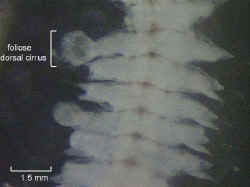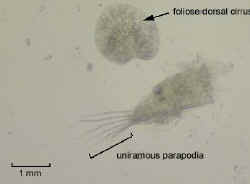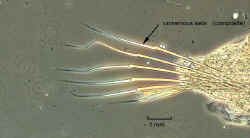 Parapodia and Setae
Parapodia and Setae
Parapodia are usually uniramous or sub-biramous with the
notopodia represented by a short stalk and large, foliose dorsal cirri.
Foliose dorsal cirri held erect over the dorsum, rarely
with acicula or setae.
All neurosetae composite; notosetae, when present,
simple.

 Foliose dorsal cirri
Foliose dorsal cirri
 Parapodia
&
Parapodia
& 
foliose dorsal cirri


Uniramous parapodia & compound
spinigerous setae
